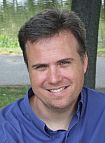Chicago's unknown hero of peace
| 03 Aug 2015: posted by the editor - United States | |
|
But, noted Time, “analysts could show that Mr. Kellogg did not originate the outlawing-war idea; that a comparatively obscure lay figure named Salmon Oliver Levinson, Chicago lawyer,” was the driving force behind it. Indeed he was. S.O. Levinson was a lawyer who believed that courts handled interpersonal disputes better than dueling had done before it was banned. He wanted to outlaw war as a means of handling international disputes. Until 1928, launching a war had always been perfectly legal. Levinson wanted to outlaw all war. “Suppose,” he wrote, “it had then been urged that only ‘aggressive dueling’ should be outlawed and that ‘defensive dueling’ be left intact.” Levinson and the movement of Outlawrists whom he gathered around him, including well-known Chicagoan Jane Addams, believed that making war a crime would begin to stigmatize it and facilitate demilitarization. They pursued as well the creation of international laws and systems of arbitration and alternative means of handling conflicts. Outlawing war was to be the first step in a lengthy process of actually ending that peculiar institution. The Outlawry movement was launched with Levinson’s article proposing it in The New Republic magazine on March 7, 1918, and took a decade to achieve the Kellogg-Briand Pact. The task of ending war is ongoing, and the pact is a tool that might still help. This treaty commits nations to resolving their disputes through peaceful means alone. The U.S. State Department’s website lists it as still in effect, as does the Department of Defense Law of War Manual published in June 2015. Levinson and his allies lobbied senators and key officials in the United States and Europe, including French Foreign Secretary Aristide Briand, U.S. Senate Foreign Relations Chairman William Borah, and Secretary of State Kellogg. The Outlawrists united a U.S. peace movement far more mainstream and acceptable than anything that’s borne that name in the decades since. But it was a movement that had been split over the League of Nations. The frenzy of organizing and activism that created the peace pact was massive. Find me an organization that’s been around since the 1920s and I’ll find you an organization on record in support of abolishing war. That includes the American Legion, the National League of Women Voters, and the National Association of Parents and Teachers. By 1928, the demand to outlaw war was irresistible, and Kellogg who had recently mocked and cursed peace activists, began following their lead and telling his wife he might be in for a Nobel Peace Prize. On August 27, 1928, in Paris, the flags of Germany and the Soviet Union newly flew along many others, as the scene played out that is described in the song “Last Night I Had the Strangest Dream.” The papers the men were signing really did say they would never fight again. The Outlawrists persuaded the U.S. Senate to ratify the treaty without any formal reservations. None of this was without hypocrisy. U.S. troops were fighting in Nicaragua the whole time, and European nations signed on behalf of their colonies. Russia and China had to be talked out of going to war with each other just as President Coolidge was signing the treaty. But talked out of it they were. And the first major violation of the pact, World War II, was followed by the first ever (albeit one-sided) prosecutions for the crime of war—prosecutions that rested centrally on the pact. The wealthy nations have, for a number of possible reasons, not gone to war with each other since, waging war only in poor parts of the world. The United Nations Charter, which followed without replacing the Kellogg-Briand Pact, seeks to legalize wars that are either defensive or U.N. authorized—loopholes more abused than used over the years. The lessons of the Outlawry movement may still have something to teach both the neocon war advocates and the “Responsibility to Protect” humanitarian warriors. It’s a shame that their literature is largely forgotten. In St. Paul, Minn., appreciation is reviving for local hero Frank Kellogg, who was indeed given the Nobel, is buried in National Cathedral, and for whom Kellogg Avenue is named. But the man who led the movement that began to stigmatize war as evil and to make war understood as optional rather than inevitable was from Chicago, where no memorial stands and no memory exists. * David Swanson is the author of “When the World Outlawed War.” He’ll be speaking in Chicago on Thursday 27 Aug. For information, see http://faithpeace.org. |
|
|
|
| Name: | Remember me |
| E-mail: | (optional) |
| Smile: | |
| Captcha | |
 By David Swanson, Guest columnist Daily Herald
By David Swanson, Guest columnist Daily Herald